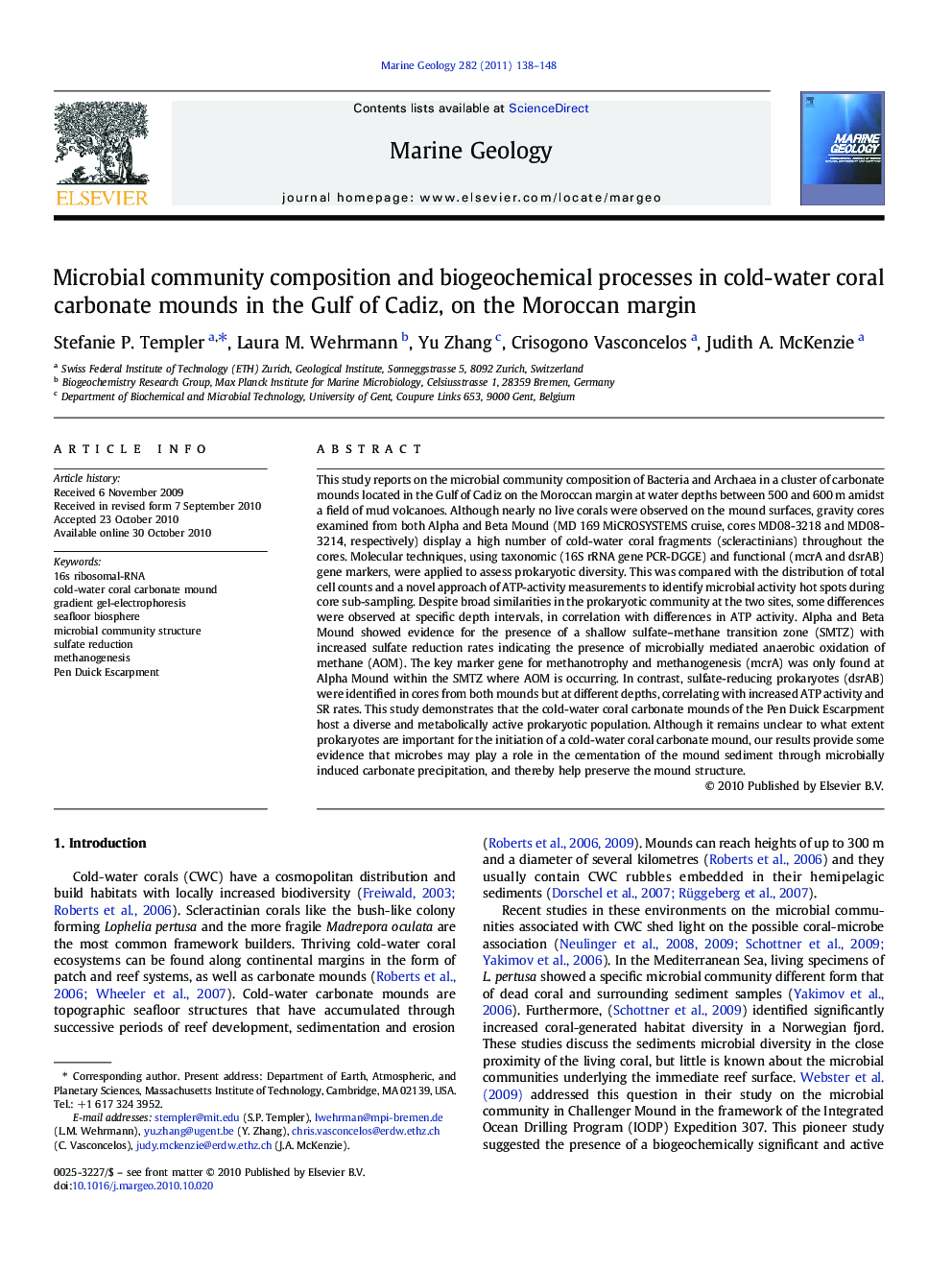| کد مقاله | کد نشریه | سال انتشار | مقاله انگلیسی | نسخه تمام متن |
|---|---|---|---|---|
| 6441888 | 1639139 | 2011 | 11 صفحه PDF | دانلود رایگان |
عنوان انگلیسی مقاله ISI
Microbial community composition and biogeochemical processes in cold-water coral carbonate mounds in the Gulf of Cadiz, on the Moroccan margin
دانلود مقاله + سفارش ترجمه
دانلود مقاله ISI انگلیسی
رایگان برای ایرانیان
کلمات کلیدی
موضوعات مرتبط
مهندسی و علوم پایه
علوم زمین و سیارات
ژئوشیمی و پترولوژی
پیش نمایش صفحه اول مقاله

چکیده انگلیسی
This study reports on the microbial community composition of Bacteria and Archaea in a cluster of carbonate mounds located in the Gulf of Cadiz on the Moroccan margin at water depths between 500 and 600Â m amidst a field of mud volcanoes. Although nearly no live corals were observed on the mound surfaces, gravity cores examined from both Alpha and Beta Mound (MD 169 MiCROSYSTEMS cruise, cores MD08-3218 and MD08-3214, respectively) display a high number of cold-water coral fragments (scleractinians) throughout the cores. Molecular techniques, using taxonomic (16S rRNA gene PCR-DGGE) and functional (mcrA and dsrAB) gene markers, were applied to assess prokaryotic diversity. This was compared with the distribution of total cell counts and a novel approach of ATP-activity measurements to identify microbial activity hot spots during core sub-sampling. Despite broad similarities in the prokaryotic community at the two sites, some differences were observed at specific depth intervals, in correlation with differences in ATP activity. Alpha and Beta Mound showed evidence for the presence of a shallow sulfate-methane transition zone (SMTZ) with increased sulfate reduction rates indicating the presence of microbially mediated anaerobic oxidation of methane (AOM). The key marker gene for methanotrophy and methanogenesis (mcrA) was only found at Alpha Mound within the SMTZ where AOM is occurring. In contrast, sulfate-reducing prokaryotes (dsrAB) were identified in cores from both mounds but at different depths, correlating with increased ATP activity and SR rates. This study demonstrates that the cold-water coral carbonate mounds of the Pen Duick Escarpment host a diverse and metabolically active prokaryotic population. Although it remains unclear to what extent prokaryotes are important for the initiation of a cold-water coral carbonate mound, our results provide some evidence that microbes may play a role in the cementation of the mound sediment through microbially induced carbonate precipitation, and thereby help preserve the mound structure.
ناشر
Database: Elsevier - ScienceDirect (ساینس دایرکت)
Journal: Marine Geology - Volume 282, Issues 1â2, 30 March 2011, Pages 138-148
Journal: Marine Geology - Volume 282, Issues 1â2, 30 March 2011, Pages 138-148
نویسندگان
Stefanie P. Templer, Laura M. Wehrmann, Yu Zhang, Crisogono Vasconcelos, Judith A. McKenzie,